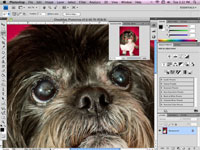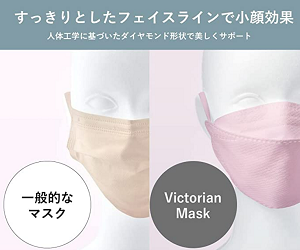Pferde können nicht auf deinem Schoß sitzen; Auf der anderen Seite kann man auf einem Kätzchen nicht galoppieren. Wie jedes Tier brauchen Pferde tägliche Pflege und regelmäßige Pflege. Wenn Sie ein Pferd kaufen, müssen Sie die richtigen Fragen kennen, und wenn Sie ein Pferd besitzen, müssen Sie in der Lage sein, zu erkennen, wann Ihr Pferd einen gesundheitlichen Notfall hat. Pferde sind eine große Verantwortung, aber sie sind es wert!

©Von Anastasija Popova/Shutterstock.com
Fragen, die Sie sich stellen sollten, wenn Sie ein Pferd kaufen
Der Kauf eines Pferdes ist eine große Sache. Es ist ein Prozess, der einige Überlegungen und Vorbereitung verdient und erfordert. Wenn Sie sich auf den Weg zu Ihrem Pferdekauf-Abenteuer machen, sollten Sie sich mit den folgenden Fragen an den Verkäufer rüsten:
-
Wie viel verlangst du für das Pferd? Ist dieser Preis verhandelbar?
-
Wie alt ist das Pferd?
-
Wie groß ist das Pferd? (Wie viele Hände?)
-
Welches Geschlecht und welche Größe hat das Pferd?
-
In welcher Disziplin wird das Pferd geritten?
-
Hat das Pferd jemals eine professionelle Ausbildung gehabt?
-
Ist das Pferd für einen Anfänger geeignet?
-
Ist das Pferd für Kinder geeignet (wenn Sie Kinder haben, die das Pferd reiten)?
-
Lädt das Pferd in einen Anhänger?
-
Hat das Pferd irgendwelche schlechten Angewohnheiten wie Krippen (beißen in einen Zaun, während man Luft einsaugt), Weben (wiederholtes Hin- und Herschieben von Vorderbein zu Vorderbein) oder Zurückziehen beim Anbinden?
-
Hat das Pferd irgendwelche medizinischen Probleme oder eine Vorgeschichte von medizinischen Problemen wie Koliken, Lahmheiten oder Allergien?
-
Warum verkaufst du das Pferd?
Tägliche Aufgaben in der Pferdepflege
Die Pflege eines Pferdes ist eine große Verantwortung, und Sie müssen sich jeden Tag um Ihren Pferdefreund kümmern. Die folgende Liste beschreibt die Aufgaben, die Sie täglich für Ihr Pferd erledigen müssen:
- Füttere dein Pferd zwei- bis dreimal
- Überprüfen Sie die Wasserversorgung Ihres Pferdes
- Untersuchen Sie Ihr Pferd auf Anzeichen von gesundheitlichen Problemen
- Trainiere dein Pferd
- Reinigen Sie den Stall Ihres Pferdes ein- oder zweimal
- Putzen Sie Ihr Pferd und reinigen Sie seine Hufe
Pferdepflegebedarf und Werkzeuge
Ihr Pferd sauber zu halten und gut auszusehen ist ein wesentlicher Bestandteil des Pferdebesitzes, und außerdem kann es Spaß machen! Im Folgenden finden Sie eine Liste von Pflegewerkzeugen, die Sie zur Hand haben müssen:
-
Gummistriegel
-
Steifer Pinsel
-
Weicher Pinsel
-
Abwurfklinge
-
Tuch
-
Mähnen- und Schweifbürste
-
Mähnen- und Schweifentwirrer
-
Hufpick
-
Hufbürste
-
Badeutensilien (wie Shampoo, Spülung und Schwämme)
-
Schermaschinen
So reagieren Sie auf Notfälle bei Pferden
Ihr Pferd ist wie Sie und jedes andere Tier anfällig für gesundheitliche Probleme . Die Probleme in der Symptomspalte in der folgenden Tabelle verdienen sofortige Aufmerksamkeit und einen Anruf beim Tierarzt.
| Symptom(e) |
Mögliche Ursache |
Schritte zur Durchführung |
| Blutung |
Verletzung |
Druck ausüben; Tierarzt anrufen |
| Blut im Urin |
Schwere Infektion oder Blasenverletzung |
Sofort Tierarzt rufen |
Husten und Speichelfluss mit gesenktem Kopf, wenn das Essen den
Mund verlässt |
Würgend |
Pferd kann atmen, aber sofort Tierarzt rufen |
| Unfähigkeit zu stehen; Staffelung |
Schwere Krankheit |
Sofort Tierarzt rufen |
| Flüssige, übelriechende Exkremente |
Durchfall |
Sofort Tierarzt rufen |
Starkes Schwitzen, Hinlegen und Aufstehen, Scharren,
Bauchbeißen |
Kolik |
Remove food; call vet immediately |
| Rapid breathing, raspy breathing, heavy coughing |
Illness or infection |
Call vet immediately |
| Refusal to eat |
Serious illness or mild colic |
Call vet immediately |
| Severe pain |
Injury or illness |
Call vet immediately |
| Straining to defecate or urinate |
Intestinal or urethral blockage |
Call vet immediately |
| Swelling or body part that’s hot to the touch |
Injury |
Call vet immediately |
| Teary eye; closed eye; red eye; cloudy eye |
Eye injury or infection |
Call vet immediately |
Temperature significantly above or below
98–101.5ºF |
Fever |
Call vet immediately |
Understanding a Horse’s Senses
To see things from the horse’s perspective, you need to know — literally — how the horse takes in the world. Humans evolved to be hunters and gatherers, chasing down prey and finding appropriate plants to eat. Horses, on the other hand, are built to avoid hunters and eat nearly everything that grows around them. Given these fundamental distinctions, the horse’s senses are bound to have nuances that are somewhat different from those of a human.
Sight
Sight is the most important equine sense. For a prey animal like the horse, in the wild, good eyesight means the difference between life and death. Literally seeing trouble coming is the best way the horse has to make it to safety before a predator gets too close.
Because horses have long, narrow heads with eyes on either side, they have the ability to take in more of the view than humans do. When their heads are facing forward, horses have a nearly 180-degree field of vision. They can see in front of and almost all the way around their bodies, though they do have some blind spots.
One of a horse’s blind spots is directly behind, so you should never approach a horse from the back unless the horse already knows you’re there.
No one knows for sure how far horses can see, mainly because horses have trouble pronouncing the letters on eye tests. Scientists who have done experiments in this field have made some educated guesses that horses can see pretty darn far, in the realm of at least hundreds of yards away. Horses can distinguish patterns, which means they’re able to take in fine details. They can also perceive depth well.
Horses also have much better night vision than humans. Many a rider has been out on a dark, moonless trail, dumbfounded by his or her horses’ ability to see where the pair are going despite the incredibly dim light.
Scientists know far less about horses’ color vision than they do about other areas of equine sight, but they’re certain that horses see many of the same colors that we see, with two exceptions: red and green. In fact, they believe that horses have the same color vision as humans who suffer from red-green color blindness. That said, horses are still able to pick out the greenest grass in a field!
Hearing
A species that survives by getting a head start on marauding predators needs a pretty good sense of hearing. The fact that horses have survived all the way to modern times is testimony to their incredible hearing, which is considerably better than a human’s.
If you look at the shape of the horse’s ear, you can see that it’s built sort of like a funnel. With this design, the ear can capture sound in its outer part and channel it down into the ear canal. The broad outer part of the horse’s ear very adequately takes in the slightest sound in the horse’s environment.
Using very mobile ears, horses constantly monitor the world around them. Just imagine trying to pay complete attention to different sounds coming in to either ear at the same time. Impossible for a human, yet the horse does this on a steady basis. A horse can take in the sounds of a car driving by, children playing, a bird chirping and a human approaching, all at once, from different places in the environment. The horse then processes that information and makes split second decisions about whether to react — all while picking out the best blades of pasture grass or meandering down a rocky trail. The process really is mind-blowing.
Loud, unfamiliar noises can send a relaxed horse into a tizzy. On the other hand, a placid, reassuring sound can ease a horse’s worries. It’s amazing to see how a frightened horse can be comforted by a soft, gentle voice from a calm and confident human. Keep this fact in mind when handling your horse in a particularly noisy or frightening environment.
Smell
Like most non-human animals, horses have an acute sense of smell that they regularly employ to provide them with information on what is going on around them. Horses use their sense of smell in a number of different and important ways.
Nature equipped the equine with a strong olfactory sense that can tell the animal whether a predator is near. All it takes is a strong upwind breeze to bring a dangerous scent to the attention of a wild herd. After getting a whiff of the predator, the herd literally high-tails it (their tails stick way up in the air as they flee) out of there in a flash.
Horses also use smell as part of their complicated social structure. Horses typically greet each other nose to nose, each taking in the odor of the other. Horses also come to recognize each other by scent as well as by sight. Mares and foals quickly memorize each other’s scents and use this information to help locate each other in a crowd of horses.
Most horses also greet humans in the same way. When you introduce yourself to a horse for the first time, notice how the horse reaches out his muzzle to sniff you. Given this, the most polite way to approach a horse is with the back of your hand extended so the horse may take in your personal scent. Letting a horse breathe in your scent tells the animal that you are a fellow herdmate (not a predator), and usually makes the horse more agreeable to being handled.
Touch
The equine sense of touch is an important (although often overlooked) element to the horse. Although many people think that horses have a tough hide, they really don’t. Their skin is tougher than our human epidermis, but it is still rich with nerve endings.
If you sit on a pasture fence and watch a herd of horses for a few hours, you’ll see plenty of evidence of how horses use touch to communicate with each other. Mothers reassure their babies with a brush of the muzzle; comrades scratch each other’s itches with their teeth. Whenever a message needs to be sent from one horse to another, visual cues and touch — or the threat of it — are nearly always used.
Humans can also use touch to convey messages to the horse. A gentle rub down, a pat on the shoulder, a vigorous massage in just the right place — these are all ways of saying, “I’m your friend” to a horse. Sometimes, if you’re lucky, you’ll get a similar tactile message in return.
Equine Resources
Check out the following resources as your appetite for equine (horse) knowledge increases.
Breed registries
Appaloosa Horse Club
2720 W. Pullman Rd.
Moscow, ID 83843-0903
(208) 882-5578
www.appaloosa.com
International Colored Appaloosa Association
4610 New Mexico 206
Milnesand, NM 88125
(547) 238-4280
www.icaainc.com
Arabian Horse Association
10805 E. Bethany Dr.
Aurora, CO 80014
(303) 696-4500
www.arabianhorses.org
American Miniature Horse Association
5601 South IH 35W
Alvarado, TX 76009
(817) 783-5600
www.amha.com
American Morgan Horse Association
4066 Shelburne Rd., Suite 5
Shelburne, VT 05482-0960
(802) 985-4944
www.morganhorse.com
American Paint Horse Association
P.O. Box 961023
Fort Worth, TX 76161-0023
(817) 834-2742
www.apha.com
American Quarter Horse Association
1600 Quarter Horse Dr.
Amarillo, TX 79104
(806) 376-4811
www.aqha.com
Racking Horse Breeders Association of America
67 Horse Center Rd., Suite B
Decatur, AL 35603-9735
(256) 353-7225
www.rackinghorse.com
American Saddlebred Horse Association
4083 Iron Works Pkwy.
Lexington, KY 40511-8434
(859) 259-2742
www.saddlebred.com
United States Trotting Association (Standardbreds)
6130 S. Sunbury Rd.
Westerville, OH 43081-9309
(877) 800-8782
www.ustrotting.com
Tennessee Walking Horse Breeders’ & Exhibitors’ Association
P. O. Box 286
Lewisburg, TN 37091-0286
(931) 359-1574
www.twhbea.com
The Jockey Club (Thoroughbreds)
821 Corporate Dr.
Lexington, KY 40503-2794
(859) 224-2700
www.jockeyclub.com
Educational organizations
American Horse CouncilDocument1
1616 H Street NW, 7th Floor
Washington, DC 20006
(202) 296-4031
www.horsecouncil.org
CHA (Certified Horsemanship Association)
1795 Alysheba Way, Suite 7102
Lexington, KY 40509
(859) 259-3399
www.cha-ahse.org
United States Pony Clubs, Inc.
4041 Iron Works Pkwy.
Lexington, KY 40511-8462
(859) 254-7669
www.ponyclub.org
Equine rescue groups
American Standardbred Adoption Program
745 S Main St.
Viroqua, WI 54665
(608) 689-2399
www.4thehorses.com
Standardbred Retirement Foundation
42 Arneytown-Hornerstown Rd.
Cream Ridge, NJ 08514
(609) 738-3255
www.adoptahorse.org
The Horse Protection League
P. O. Box 741089
Arvada, CO 80006
(303) 216-0141
thehorseprotectionleague.org
Equine equipment
Dover Saddlery, Inc.
525 Great Rd.
Littleton, MA 01460
(800) 406-8204
www.doversaddlery.com
Jeffers Equine
P.O. Box 100
Dothan, AL 36302
(800) 533-3377
www.jeffersequine.com
Logan Coach Trailers
2990 S. 800 W.
Nibley, UT 84321
(800) 742-7047
www.logancoach.com
MD Barns
720 E. Locust Street
Ontario, CA 91761
(800) 343-2276
www.mdbarnmaster.com
Morton Buildings, Inc.
P.O. Box 399
Morton, IL 61550-0399
(800) 447-7436
www.mortonbuildings.com
State Line Tack
395 Oak Hill Rd., Suite 210
Mountain Top, PA 18707
(888) 839-9640
www.statelinetack.com
Sundowner Trailers, Inc.
9805 OK Hwy, 48 South
Coleman, OK 73432-8523
(800) 438-4294
www.sundownertrailer.com
Equine slaughter information
American Association of Equine Practitioners
4033 Iron Works Pkwy.
Lexington, KY 40511
(859) 233-0147
www.aaep.org
Equine Advocates, Inc.
P.O. Box 354
Chatham, NY 12037-0354
(518) 245-1599
www.equineadvocates.org
Equine Protection Network, Inc.
P.O. Box 232
Friedensburg, PA 17933
www.saveamericashorses.net
Humane Society of the United States
1255 23rd Street NW, Suite 450
Washington, DC 20037
(866) 720-2676
www.humanesociety.org
Equine retirement facilities
Apple River Ranch Equine Retirement
415 Jackson St., Box 358
Hanover, IL 61041
(815) 591-3819
appleriver1.tripod.com
The P.E.I. Equine Retirement Society
Milburn, O’Leary RR#2
Prince Edward Island, C0B-1V0
Canada
(902) 859-3116
www.angelfire.com/ca/equineretirementsoc/
Heavenly Horse Haven
P.O. Box 391998
Anza, CA 92539-1998
(951) 551-3561
www.heavenlyhorsehaven.org
Pet loss hotlines
ASPCA Grief Counseling Hotline
(877) 474-3310
Tufts University School of Veterinary Medicine (Massachusetts)
(508) 839-7966
Virginia-Maryland Regional College of Veterinary Medicine
(540) 231-8038
Michigan State University College of Veterinary Medicine
(517) 432-2696
Washington State University College of Veterinary Medicine
(866) 266-8635
Activity organizations
American Endurance Ride Conference (AERC)
P.O. Box 6027
Auburn, CA 95604
(866) 271-2372
www.aerc.org
Cowboy Mounted Shooting Association
P.O. Box 157
Roswell, NM 88202
(888) 960-0003
www.cowboymountedshooting.com
National Reined Cow Horse Association
1017 N. Hwy. 377
Pilot Point, TX 76258
(940) 488-1500
www.nrcha.com
North American Trail Ride Conference (NATRC)
P.O. Box 969
Beatrice, NE 68310
(303) 688-1677
www.natrc.org
Ride & Tie Association
P.O. Box 2750
Rancho Santa Fe, CA 92067
www.rideandtie.org
United States Dressage Federation
4051 Iron Works Parkway
Lexington, KY 40511
(859) 971-2277
http://usdf.org
United States Equestrian Federation
4047 Iron Works Parkway
Lexington, KY 40511
(859) 258-2472
http://usef.org
Western Dressage Association of America
P.O. Box 2349
Parker, CO 80134
(720) 662-4584
www.westerndressageassociation.org
Other equine organizations
American Farriers Association
4059 Iron Works Pkwy., Suite 1
Lexington, KY 40511-8434
(859) 233-7411
www.americanfarriers.org
American Riding Instructors Association
28801 Trenton Ct.
Bonita Springs, FL 34134-3337
(239) 948-3232
www.riding-instructor.com
The Equine Connection National AAEP Locator Service (Horse vets)
https://aaep.org/horse-owners/get-dvm
North American Riding for the Handicapped
P.O. Box 33150
Denver, CO 80233
(800) 369-RIDE (800-369-7433)
www.narha.org
Horse information Websites
HorseIllustrated.com
www.horseillustrated.com
InfoHorse.com
www.infohorse.com
The International Museum of the Horse
www.imh.org
TheHorse.com
www.thehorse.com
Horse publications
Equus
(800) 829-5910
www.equusmagazine.com
Pferd & Reiter
(877) 717-8928
www.horseandrider.com
Pferd illustriert
(844) 330-6373
www.horseilllustrated.com
Praktischer Reiter
(877) 717-8929
www.practicalhorsemanmag.com
Western Horseman
(817) 737-6397
www.westernhorseman.com
Junger Reiter
(844) 330-6373
www.youngrider.com
Literatur-Empfehlungen
Die folgenden Bücher können Ihnen dabei helfen, mehr über verschiedene Aspekte der Pferdepflege und Horsemanship zu erfahren oder Ihnen helfen, ein besserer Reiter zu werden, indem Sie sich in Form bringen.
- Bryant, Jennifer O., USDF-Leitfaden für die Dressur, Storey Publishing, 2005.
- Dennis, Dianna Robin, The Rider's Fitness Program, Storey Publishing, 2004
- Payne, Larry, Yoga für eine Familie heute, Wiley, 2014.
- Hendricks, Bonnie L., Internationale Enzyklopädie der Pferderassen, University of Oklahoma Press,
- Herman, Ellie, Pilates für eine Familie heute, Wiley, 2002.
- Pavia, Audrey, Reiten für eine Familie heute, Wiley, 2020.
- Pavia, Audrey, Horse Health & Nutrition For aFamilyToday, Wiley, 2008
- Pavia, Audrey, Trail Riding: A Complete Guide, Wiley, 2005.
- Kauffmann, Susan & Cline, Christina, The Essential Huof Book , Trafalgar Square Books, 2017
- Swift, Sally, Centered Riding, Trafalgar Square, 1985.







